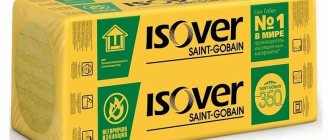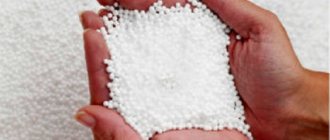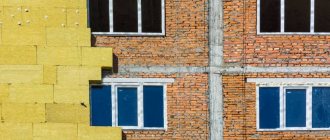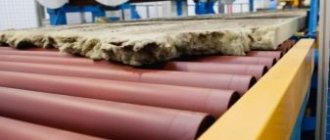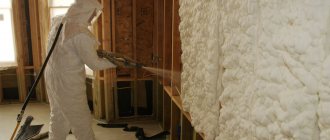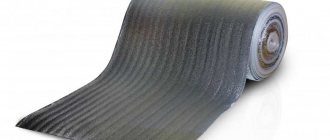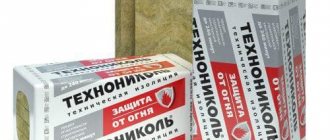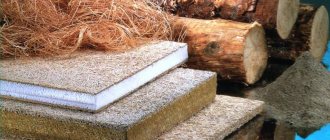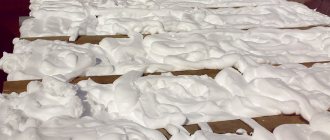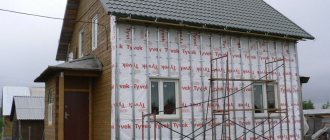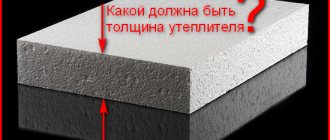In most of the territory of Russia in the autumn-spring period, temperature conditions are uncomfortable for life. The constant rise in energy prices forces us to improve the energy efficiency of residential buildings, bathhouses, and outbuildings. The international corporation Technonikol offers a full range of building materials for insulation and waterproofing of any buildings and structures. Based on the tasks and operating conditions, TechnoNIKOL basalt insulation or extruded polystyrene is chosen.
About the manufacturer
TechnoNIKOL Corporation owns 54 factories in Russia and 6 European countries.
TechnoNIKOL Corporation owns 54 factories in Russia and 6 European countries (Czech Republic, Germany, Great Britain, Belarus, Italy, Lithuania).
6 research centers are involved in the development, testing and long-term testing of the assortment.
The quality of our products meets safety requirements, which is confirmed by certificates.
Thermal insulation materials made of basalt and polystyrene are popular due to their characteristics, easy installation and a range of products suitable for any operating conditions.
Similar products
Stone wool ISOBOX Extralight 50 mm 5.76 sq. m
Stone wool ISOBOX Extralight 100 mm 4.32 sq. m
Rock wool ROCKWOOL LIGHT BUTTS SCANDIC 50 mm 5.76 sq. m
Thermal insulation TISMA 50 mm 20 sq. m
Soundproofing ROCKWOOL ACOUSTIC BUTTS 50 mm 6 sq. m
Rock wool ROCKWOOL LIGHT BUTTS SCANDIC 100 mm 2.88 sq. m
Thermal insulation TeploKNAUF for mini floors 50 mm 8.4 sq. m
Thermal insulation TeploKNAUF for floors 100 mm 9 sq. m
Rock wool ROCKWOOL ROCKFASAD 50 mm 2.4 sq. m
Thermal insulation TeploKNAUF for floors 50 mm 18 sq. m
Basalt sheet 1200x500x5 mm
Thermal insulation TeploKNAUF for roofs and walls 100 mm 6 sq. m
Articles
- Overview of insulation materials
Basalt insulation
Appearance of basalt insulation
TechnoNIKOL mineral wool is produced in the form of rolls and slabs. The production technology of the products is the same, but they have different densities. This is taken into account when designing and constructing, choosing installation and finishing technology.
Purpose
Dense TechnoNIKOL stone wool in the form of slabs allows exposure to mechanical load. The main direction of use is insulation of building walls. Installation is carried out using wet facade technology (under plaster) or under facing with clapboard, tiles, panels (ventilated facade).
Thanks to their structure, the slabs retain heat and act as sound insulation and fire protection.
How and from what it is made
Mineral wool production technology
TechnoNIKOL mineral wool is made from basalt rock with synthetic binders and special additives that improve hydrophobic properties and prevent combustion.
During the production process, basalt goes through several processing stages:
- The rock is cleaned of impurities and crushed to a fine fraction.
- The raw materials are melted in a high-temperature furnace.
- The molten mass is mixed with additives in a centrifuge, where it simultaneously breaks down into individual fibers.
- The flow of compressed air mixes the fibers, the arrangement structure becomes chaotic.
- Cooling the resulting mass.
- Pressing several layers on a conveyor.
- Heat treatment during which polymerization of additives occurs.
- Cutting to required sizes.
The entire technological process occurs without stopping, thanks to which TechnoNIKOL mineral wool becomes durable, resistant to temperature loads and other unfavorable factors.
Technologically, the production of slabs and rolls is no different, but the finished product has different densities, so different installation schemes are used when insulating walls, ceilings and roofs.
When purchasing, they check the safety certificate. Falsified and counterfeit products often contain unacceptable amounts of phenols, and the basalt itself can be radioactive.
Specifications
Technical characteristics of basalt insulation
The Corporation produces several dozen products.
When purchasing, pay attention to the parameters of TechnoNIKOL mineral wool insulation:
- Low thermal conductivity is achieved due to randomly arranged fibers and the airy structure of the material. The parameter ranges from 0.032 to 0.05 W/(m*K).
- Vapor permeability ensures that condensation does not accumulate in the insulation - vapor moves freely from the walls into the surrounding space, and the material does not get wet. The average figure is 0.3 mg/(m*h*Pa).
- Hydrophobicity - the ability not to absorb moisture from the surrounding air, not to get wet in damp rooms. Different types of TechnoNIKOL thermal insulation absorb from 2 to 5% of moisture from their own weight. For damp rooms, choose products with a minimum indicator.
- The sound insulation of the TechnoNIKOL miniplate reduces the sound from impact loads (low frequencies up to 300 Hz), but is not very effective against street noise in the upper frequency range. The solution for noisy places is Technoflor Standard slabs and Technoacoustic rolls.
- Thickness directly affects the thermal insulation properties. The slabs are produced in thicknesses from 50 to 200 mm, in rolls up to 70 mm.
- Roll length is up to 10 m with a width of up to 1.2 m, the geometric dimensions of the slabs are width up to 1200 mm, height up to 1000 mm.
- Environmental friendliness complies with European Union standards. The maximum content of organic substances (including phenol) in TechnoNIKOL mini-slabs is no more than 4.5%.
- The density of materials is from 35 kg/cu. m for the Rocklight line up to 190 kg/m3 from Tekhnoruf. This parameter is important when choosing a mounting method.
- Operating temperature from -60 to 190 oC.
Products with low density are susceptible to caking, so they are not used for insulating horizontal surfaces.
Advantages and weaknesses
The positive and negative qualities of TechnoNIKOL thermal insulation are determined by the structure of the product and the quality of the raw materials.
Product advantages:
- low thermal conductivity compared to other materials;
- non-flammable material;
- environmental friendliness;
- air and vapor permeability;
- resistance to deformation;
- wide range of permissible temperatures;
- does not rot, is not damaged by rodents and insects;
- service life up to 50 years;
- relatively low cost with high insulation rates;
- ease of installation, does not require expensive devices.
A significant disadvantage is the caking of low-density products.
To eliminate cold bridges, special attention is paid to the treatment of seams - rolled models are laid overlapping, the seams between the plates are sealed with polyurethane foam.
None of the types of insulation can be left without a decorative layer - under direct sunlight and when exposed to precipitation, the material gradually collapses.
Why choose TechnoNikol products
TechnoNikol basalt insulation is very popular among builders, as it has the following advantages:
- Low thermal conductivity.
The finest interwoven fibers, representing the structure of the material, hold a large volume of air, which remains in a stationary state. As a result, the resistance to heat transfer increases significantly, so in the cold season the room is warm, and in the heat it is cool.
- Long service life.
Stone wool is able to perform its function throughout the entire service life of the building without losing its original properties.
- Protection from aggressive environments.
The insulation does not interact chemically with other materials and many compounds.
- Resistance to biological factors.
Basalt wool does not rot, does not serve as a favorable environment for the development of fungi, and is not food or shelter for rodents.
- Manufacturability.
The material can be easily processed with hand-held cutting tools and is easy to install.
- Environmentally friendly.
All components of the heat insulator are safe for human health and the environment. Production waste is reused.
- Vapor permeability.
Air easily penetrates through the fibrous structure of the insulation, so moisture does not accumulate in it, and a comfortable microclimate is created in the room.
- Non-flammability.
The insulation is based on rocks with a melting point above 1000℃.
- High sound insulation characteristics.
Sound waves are effectively absorbed by the fine-porous structure, which allows the insulation to be used as a sound insulator.
- Hydrophobicity.
The use of special water-repellent additives during production makes the material water-repellent. This has a positive effect on its ability to retain heat.
Mounting options
TechnoNIKOL insulation for walls is installed in two ways, “wet” or according to the principle of a ventilated facade.
For the plastering option, slabs with a density of at least 130 kg/m3 are suitable - they usually have sufficient peel strength.
Installation of a “wet facade”
The initial stage of “wet facade” insulation is cleaning the surface of the walls from dust, dirt, oil stains, etc.
The cracks in the masonry are sealed with plaster mortar and unevenness is leveled out as much as possible. Recesses of no more than 3 cm per 1 linear meter of wall are allowed.
Next, there are two options for installing the panels: with glue or only with dowels with a wide head (fungi). In the first, glue is applied to the wall and slab and the mixture is leveled with a notched trowel. TechnoNIKOL insulation for walls is pressed against the wall for a few seconds. For greater strength and in order not to wait for the mortar to set, the slabs are reinforced with dowels of the required size. Within 24 hours the glue dries and further finishing begins.
When fastening only with dowels, a layer of vapor barrier material is laid between the wall and the insulation boards. Joints and seams are sealed with polyurethane foam.
The next stage is applying the first layer of plaster. A special glue is used for the mixture. The first layer is applied, into which the plaster mesh is embedded.
The mesh and glue must match each other - some mesh models dissolve in an alkaline environment. Reinforcing mesh is chosen for outdoor work.
Smooth out the composition. After the first layer has completely dried, the main plaster is applied. To give the surface an attractive appearance, decorative plasters are used, which are subsequently painted.
Insulation with roll materials
Insulating the wall with rolled materials
The first stage is cleaning and leveling the surface onto which the vapor barrier membrane is nailed.
The sheathing is nailed over the vapor barrier. The pitch of the longitudinal and transverse joists should allow for a tight fit of the insulation for the TechnoNIKOL façade. Rolled material or slabs are secured with dowels with wide heads.
Next, a layer of windproof film is nailed to the joists with a stapler, on top of which a counter-lattice 1 cm thick is mounted. The design is necessary so that there is a gap between the waterproofing and the finishing coating for ventilation and evaporation of moisture from the thermal insulation.
The final stage is the installation of finishing, which includes ceramic tiles, plastic or wood siding, and other options.
Work order
Now let’s look at how to insulate the outside walls of a private house. All necessary actions can be divided into several mutually dependent stages, which are presented in the illustration below.
Scheme of external wall insulation.
Now in more detail about each stage separately.
Stage 1 - Preparing the walls
Before installing insulation for the walls of a house outside, it is necessary to properly prepare the external surfaces of the walls. This is done this way:
- I cleaned the timber walls from dust and debris that had accumulated over two years of operation. The main thing is to remove decorative finishes from surfaces that prevent air infiltration through the walls (for example, oil paint). After this, it is advisable to vacuum the walls to remove dust from the inter-crown cracks.
Insulation of roof and ceiling
Insulation of a horizontal surface is possible in two ways.
In the first case, a vapor barrier membrane and a layer of dense (from 150 kg/m3) mineral wool are laid on the floor slabs. A cement-sand mortar is used to screed the insulation on top.
The second option fully complies with the “ventilated facade” technology. Install the cake: vapor barrier, insulation between the joists, waterproofing membrane, counter-lattice, finishing layer of OSB panels, plywood, chipboard or floorboards.
If the attic is not intended for people to be there, the finished floor is not laid.
Sloping roof slopes must be made using ventilated facade technology.
Selecting a location for installing the thermal insulation layer
Initially, you need to decide how best – from the inside or outside – to fix the mineral wool. In this article I will talk about the second type - external insulation and give some subtleties of the technology.
| External insulation |
| When installing mineral wool on building facades, there is no need to dismantle and subsequently restore the interior decorative finish. |
| If “wet” technologies are used to insulate a house, the wall can only be insulated in the warm season. |
| Facade insulation allows you to protect enclosing structures from freezing. The timber wall will not be subject to successive cycles of freezing and thawing, which significantly extends its service life. |
| A wooden wall, in contact with the heated air of the room, accumulates thermal energy, which it then releases back when the air temperature outside decreases. |
External insulation has more advantages than internal insulation.
Of course, how to attach mineral wool - from the inside or outside: which is better is up to you to decide. But, in my opinion, the only negative in external insulation is the loss of decorative functions by the facade of a timber house. But I will fix this with the help of a block house mounted on top of the insulation.
Extruded polystyrene
Extruded polystyrene
TechnoNIKOL Corporation's product range includes extruded polystyrene.
Purpose and places of use
The material is produced in the form of plates and has improved thermal insulation and strength characteristics. This allows it to be used at various stages of construction.
Expanded polystyrene insulation:
- walls, floors, ceilings of buildings;
- roofing and attics;
- walls of basements and ground floors;
- blind areas.
Polystyrene is a good sound insulator and can be used in interior partitions.
Raw materials and manufacturing method
Technology for the production of extruded polystyrene foam
The material for production is polystyrene granules, which are produced by the chemical industry from petroleum products.
In industrial lines, polystyrene is heated to the melting temperature and fed to the extrusion head using screw devices. Under the influence of hot steam and high pressure, polystyrene foams, after which it is fed to the molding line, where it is given a flat shape.
After secondary foaming, the mass is molded on stretching machines, and after cooling, it is cut to the required size.
As a result of extrusion, a material is obtained consisting of many air bubbles enclosed in an individual shell. The shells are tightly welded together, which makes the extruded polystyrene waterproof and weakly absorbs moisture - all places of possible penetration are closed to it.
The TechnoNIKOL company uses carbon granules in the production of polystyrene boards, which is why a feature of this manufacturer’s products is a silver color - this is one of the signs that the products are not counterfeit.
Technical specifications
For insulation, the main parameters are thermal conductivity, ability to withstand moisture and strength.
Parameters of extruded polystyrene:
- thermal conductivity 0.029 - 0.031 W/(m•K);
- water absorption - 0.2% by volume;
- vapor permeability - 0.014 mg/(m•h•Pa);
- operating temperature - -70 - +70 °C;
- thickness - from 30 to 100 mm;
- length 1180, width 580 mm.
You can walk on polystyrene laid on a horizontal surface carefully - any dents that appear will disappear after a short period of time.
Advantages and disadvantages
The positive and negative properties of a material are directly related to its structure and technical characteristics.
The advantages of the products include low thermal conductivity, compression resistance, and non-flammability. The material does not rot and does not support the spread of fungi and mold.
The absence of cavities and moisture in the material makes it resistant to negative temperatures - styrofoam does not freeze.
I consider the low vapor and air permeability of the slabs to be the negative aspects.
Low weight ensures ease of installation - the sheets can be easily raised to any height, and reliable brackets are not needed for fastening.
The high extrusive properties of the material ensure reliable adhesion to the plaster.
Polystyrene is produced with grooves and with careful installation there are no cold bridges.
The disadvantages include:
- destruction from sunlight (ultraviolet radiation);
- high price;
- release of harmful substances when heated;
- possible infestation of rodents.
The whole complex of positive and negative qualities is taken into account when choosing extruded polystyrene as thermal insulation.
Specifications
Stone wool has a number of advantages compared to other types of insulation, which determine the scope of its use and the variety of places of application.
Description, types and features of production
Stone wool is produced, as already written above, from melts of various rocks. The most common type of stone wool is a material made from basalt; such insulation is also called “basalt wool”.
Stone wool is made in special furnaces in which natural rocks of mountainous, volcanic origin or basalt are melted at high temperatures.
The rock in a liquid state is drawn into fibers, to which binding components are added, after which the threads (fibers) are treated with special solutions that improve the technical characteristics of the resulting product.
After this, the threads are once again thermally treated, resulting in their polycondensation and the formation of insulation in the given geometric dimensions.
When forming stone wool slabs, resins based on phenol and formaldehyde are used.
Types of stone wool
Depending on the rigidity of the resulting insulation, basalt wool is classified as:
- Soft.
- Medium hardness.
- Tough.
The soft type of stone wool is made from fibers of the smallest thickness, which, when forming a slab, create a large number of air cavities that determine the product’s ability to retain heat.
This type of insulation is prone to destruction under the influence of external mechanical loads, so it is used in the construction of roofs, ceilings, floors and other building structures, which are covered with other materials during finishing.
Soft stone wool in rolls is used to insulate roofs and ceilings
The material is of medium hardness, made from thicker and correspondingly stiffer fibers, which allows it to be used for insulating facades, engineering structures (ventilation and cable ducts, heating mains), as well as other types of work (sound and fire safety) at similar facilities.
